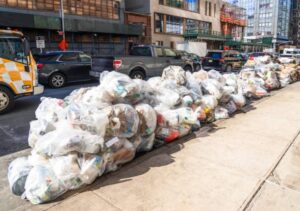Rubbish Dumps Adelaide: What Are They For?
Trash that’s tossed in a bin is usually sent to a landfill, also called rubbish dumps Adelaide. In the past, these dumping grounds went unmonitored and bred contamination and disease-carrying pests.
At a landfill, bacteria break down the trash in an oxygen-free environment. It produces methane gas, a potent greenhouse gas that contributes to global warming. Modern landfill systems capture this methane and use it to generate energy.
What are they?
 A garbage dump, or rubbish dump, is a site where discarded, non-recyclable material is stored indefinitely. In the past, these sites went unmonitored, bred contamination and attracted disease-carrying pests. Today, most of the world’s rubbish dumps are sanitary landfills that follow strict environmental standards and employ engineers to ensure that microbes break down complex organic matter over time. They also capture byproducts of decomposition, like methane, for use as energy.
A garbage dump, or rubbish dump, is a site where discarded, non-recyclable material is stored indefinitely. In the past, these sites went unmonitored, bred contamination and attracted disease-carrying pests. Today, most of the world’s rubbish dumps are sanitary landfills that follow strict environmental standards and employ engineers to ensure that microbes break down complex organic matter over time. They also capture byproducts of decomposition, like methane, for use as energy.
For the most part, sanitary landfills take in household rubbish and other non-hazardous waste. They’re usually lined with clay and a layer of plastic about a half-inch thick. On top of this, a drainage system is designed to separate the liquid that’s produced by waste (called leachate) from rainwater and surrounding soil.
However, many people still live in landfill communities where they sort through garbage for items they can keep or sell for a living. These residents are called “recyclers” or “pickers.” Those who make their living in landfills often do not have other employment options, and they usually earn low wages that put them below the United Nations’ line of extreme poverty.
What are the problems?
The vast amount of trash created by humans is not only a health and environmental concern but also an economic one. Communities near garbage dumps suffer from lower property values as well as bad odours. Many people living in or around landfills are often sick and suffer from respiratory ailments, while some are even reported to have died as a result of exposure to the toxic chemicals found there.
Landfills leak dangerous greenhouse gasses, which contribute to climate change. In fact, landfills are the third-largest source of methane emissions in the United States, and methane is 28 to 36 times more effective than carbon dioxide at trapping heat in the atmosphere.
As the waste breaks down in rubbish dumps Adelaide, bacteria produce methane and other byproducts of breakdown. These pollutants seep through the cell walls and into the soil surrounding the landfill, where they mix with rainfall and leach out toxins into water supplies. This contaminated water is called leachate, and it can cause a variety of health problems.
What are the solutions?
The vast majority of our trash goes to landfills. It includes the waste that comes from homes, schools, restaurants, public places, markets and hospitals. Wood, paper, plastic, glass, broken furniture, grounded cars and obsolete electronic devices all go to the dump.
Landfills are carefully designed structures built into or on the ground, with a covering of soil that allows plants to grow atop the waste. It helps seal the trash from contamination and prevents disease-carrying pests. The byproducts of trash decomposition that would normally pollute the atmosphere, like methane and other gases, are captured and used to produce electricity.
Despite these advantages, landfills are not perfect. They leak greenhouse gasses that contribute to climate change and negatively impact human health. They can also be a source of water pollution, which can contaminate the food we eat and the water we drink. For example, toxins from landfills can cause congenital disabilities, low birth weight and certain cancers.
There are many ways to reduce the amount of trash that ends up in landfills, such as reducing the use of single-use plastics, encouraging waste sorting and promoting composting. But there is no one-size-fits-all solution to this global problem. Every country needs to find its path, depending on its resources and needs. To start, governments must focus on prevention and minimization.
How do they work?
When you bring your trashcans to the curb on pickup day, workers empty the contents into a truck and haul it away. That big truck is headed to a landfill, where the garbage is eventually buried.
Modern rubbish dumps Adelaide are massive facilities with a system of gates and fences to control access. They are designed to prevent rain and surface water from seeping into the buried waste, which could be contaminated with dangerous chemicals. The waste is capped with a layer of compacted soil, which seals the trash from the air and reduces the amount of water that seeps in. A cap also helps prevent the growth of unwanted plants, which can cause odours and erosion.